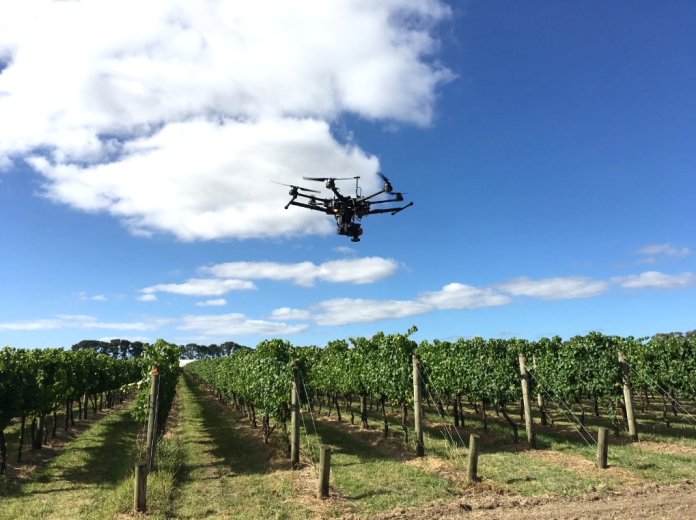
Thanks to researchers at the Queensland University of Technology (QUT), and the advancements of technology, of course, Australia’s grape industry now has a fighting chance against the world’s worst grapevine pest, the grape phylloxera (Daktulospaira vitifoliae).
Namely, a collaboration between Agriculture Victoria, the Plant Biosecurity CRC (PBCRC) and QUT has focused on using high-tech drones to detect this tiny pest and the research trial has proven quite successful.
Grape phylloxera can be disastrous, especially if it goes undetected and is allowed to spread; that is why, early and proper detection if of the utmost importance.
The drones were used to capture images using hyperspectral cameras of vineyards – a process which is significantly cheaper and faster than the standard ground surveys and ground traps that have been used to determine the presence and level of any infestation.
“By using hyperspectral technology, we are able to look at not only the vineyard as a whole, but also each individual grape vine, and we are able to detect very subtle differences in the plants, to assess the presence of disease,” said QUT Associate Professor Felipe Gonzalez.
“A standard camera that you might use at home films in three colour bands, which are red, green and black. In comparison, a hyperspectral camera films in 270 colours bands. This provides an incredible level of detail and allows us to see much more than the human eye.”
Since every single vine gives off unique hyperspectral signatures, like fingerprints, the researchers developed a whole new artificial intelligence algorithms to classify the individual ‘hyperspectral signatures’ of the vines, in a unique database.
“The more fingerprints we can input into that database, the more effective the system will be. The information can then be used to build a catalogue of pest and disease levels, which can be monitored over time. The same algorithm could also be used for other pests including botrytis, downy mildew, light brown apple moth, mealybugs, nematodes and powdery mildew,” Professor Gonzalez added.
According to Agriculture Victoria researcher Dr John Weiss, there are Phylloxera Infested Zones in Victoria in Nagambie, Mooroopna, Whitebridge, Upton, North East Victoria and Maroondah – and around Albury and Corowa and Greater Sydney in New South Wales. as well as risk zones in Queensland and Victoria.
“Agriculture Victoria Research already has an extensive research program in place with Wine Australia to tackle phylloxera and this project complements those activities. The data we have obtained will be very valuable to growers and we are proud to be doing what we can to assist the industry,” he said.
Australia’s grape industry contributes an estimated $40 billion to the nation’s economy each year.




















